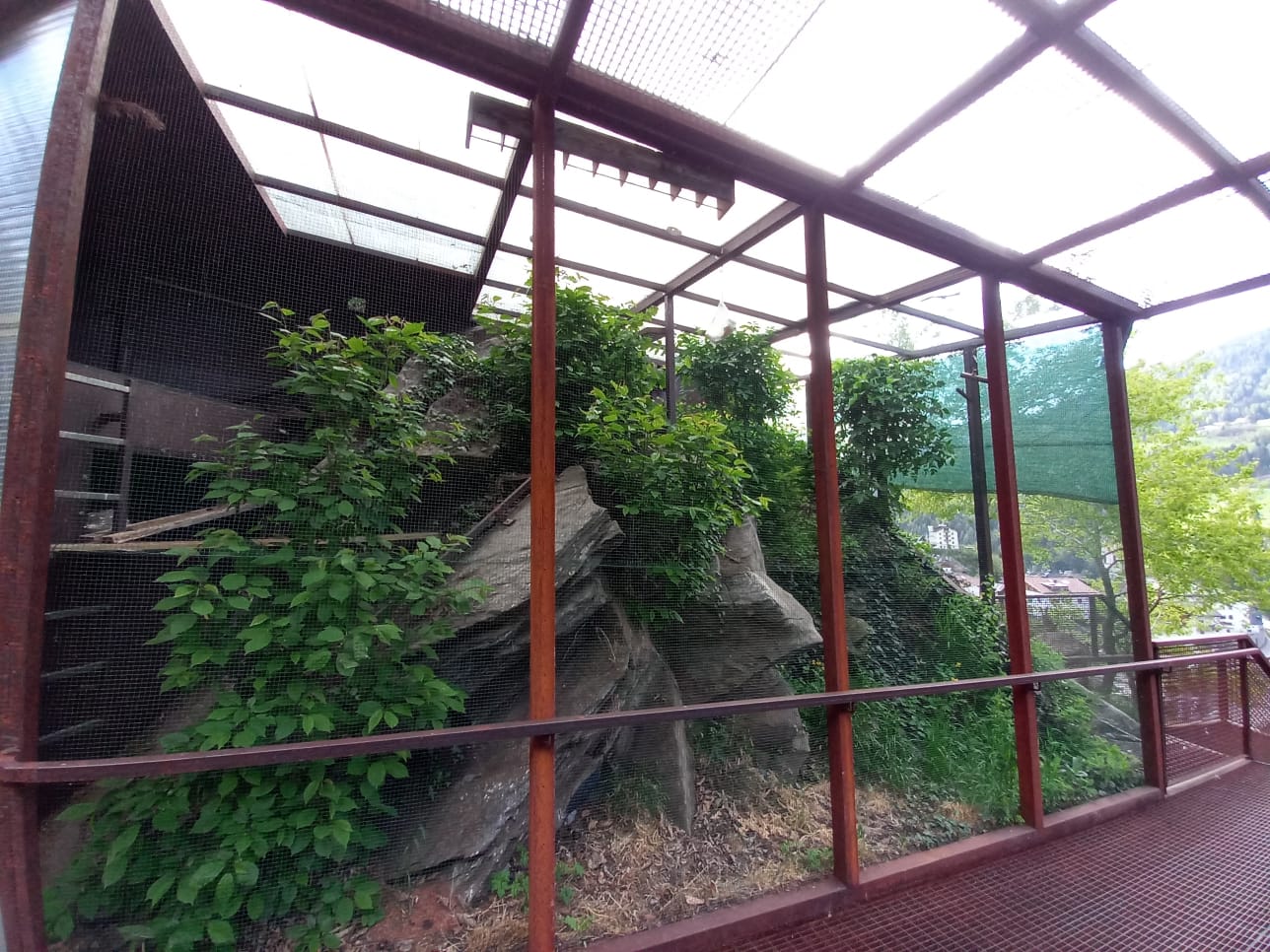Rock Partridge
On 5 April 2011, the first open aviary was inaugurated and four bird couples were already moving in.
There are now to see two nice couple of Rock Partridge while breeding. The aviary can easily be reached via the surrounding exterior walkway of the Bunker Museum and is located directly at the Ibex enclosure. So a part of the native bird life can be experienced closely and in a fascinated natural setting: experience – understand – be amazed!
The Rock Partridge appears to be declining in most of its Italian range. Indeed, since the second half of the XX century, there has been a progressive numerical decrease of the populations and a reduction of the distribution range.
Seasonal phenology
Resident species, but it performs seasonal altitudinal movements of variable magnitude in relation to the harshness of winter, particularly the snowfall. It is gregarious, except in the breeding period when the flocks disperse and form strongly territorial pairs. The nest is built with plant material in a depression in the ground sheltered by vegetation or a rock; 8-14 eggs are laid at intervals of 24-36 hours between April and June. Incubation begins when the last egg is laid, which results in synchronous hatching. The females brood for 24-26 days. The chicks are nidifugous and perform their first flights at the age of 1-2 weeks. The young are cared for by the female alone or by both parents. The family can remain together until pair formation the following spring or can unite with other broods or isolated individuals in groups of even 35-40 individuals.
Habitat
The Rock Partridge inhabits arid rocky peaks, xeric meadows with rather short grass, stones and rocky outcrops, pastures and, on Mt. Etna, lava fields lacking or more or less covered with vegetation. In the Alps, it occurs between 800-1,000 and 2,300-2,500 m altitude, in the Apennines between 1,600 and 2,200 m, and in Sicily from a few tens of meters to more than 2,000 m.
Conservation
In Europe, the species has an unfavourable conservation status (SPEC 2: vulnerable). It is included in the Italian Red List as “vulnerable”. The current unfavourable status is due to various negative factors, particularly environmental modifications caused by abandonment of agricultural and pastoral activities in mountain zones, excessive hunting pressure and poaching. As in the case of other hunted Galliformes, repopulation has been attempted to counteract population declines. Until recently, such releases have often included hybrids with both the Red-legged Partridge and the Chukar (Alectoris chukar), or even hybrids between the latter two species. There have also been many releases of the Chukar. Fortunately, these repopulations do not seem to have altered the individuality of the three subspecies present in Italy. Effective conservation measures must include both the reduction of hunting pressure, so that it is proportional to the annual increase, and the cessation of indiscriminate repopulation. Technically correct reintroductions could be carried out with subjects raised in captivity from selected strains of the different subspecies.




